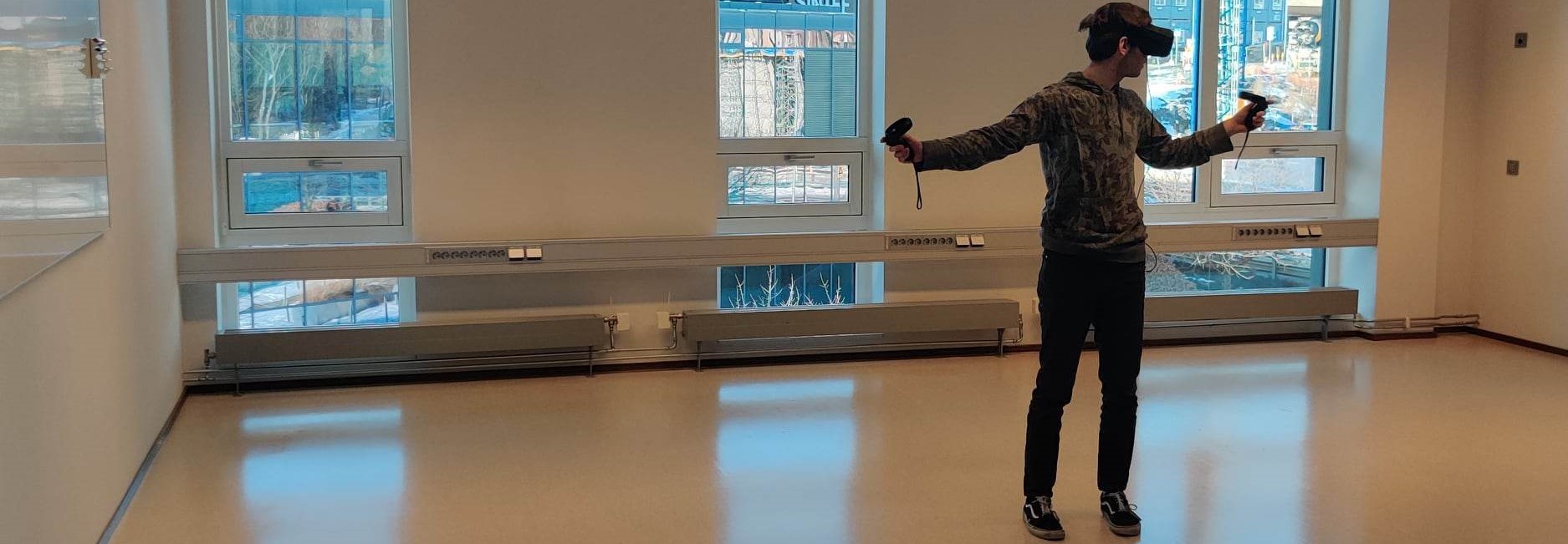What is Redirected Walking?
Virtual reality (VR) allows us to dive into virtual worlds and experience them in first person. Several of our senses can be used in this experience, and the senses of vision, sound and touch work reasonable well. What we can also achieve is the sense of our own body, the so-called proprioperceptive or kinesthetic sense.
When we used VR headsets today, programs react to the motion of the head in real time, and mimic those moves in the virtual world. To some extent, also hand and body pose can be tracked or deduced. However, most of the time, we sit in a chair and to move our first-person avatar. This feels unnatural and restrictive as it removes a key physical aspect of moving around in the virtual environment.
Wearing VR headsets, we can walk around in the real world, and by way of of tracking, this motion can be brought into the virtual world as well. This translation creates a high level of immersion but it is limited. The physical space in the real-world is limited by things such as walls and obstacles in the real world, where these don’t exist in the virtual world. At this point, Redirected Walking appears.
The term describes the ”perceptually unnoticeable virtual camera motion offset from a user’s movement”. Essentially, the system assesses the layout of the real and the virtual world, and works continually to rotate the virtual world’s coordinate system against the real-worlds coordinate system.
Specific question for this thesis
In this thesis, you will extend our knowledge of redirected walking. You will make use of the software that we have already developed and extend it to conduct new research. Our own developments are documented in the master theses listed in the sidebar.
The existing software makes use of Unreal Engine on Windows, OpenXR and SteamVR, with VR devices comprising Oculus Rift and Quest headsets as Vive trackers.
Our current results have been achieved with a direct connection between a PC running the Unreal game and an Oculus headset worn by the user. We did not attempt to introduce delays between the computer running the game and the headset where the player experiences it. This makes sense for many scenarios, but many game developers as well as players prefer Cloud Gaming. In Cloud Gaming, developers make compute resources available in the Cloud, where the game logic runs, video frames are rendered into a video stream, and this video is then live-streamed to the VR headset.
It is very obvious that this introduces greater delays than the delay between a computer and a directly connected VR headset. However, it is possible to attempt to partially hide this latency by predicting the human motion, and send those predictions to the server. We want to explore under controlled conditions what this means for players' interaction with virtual worlds when they use movement in the real world to control their first-person avatar in the virtual world, combined with redirected walking to do this when the virtual world is larger than their real-world environment.
The study of the latency impact, and our ability to predict human walking speed and direction comprise the central questions of this master thesis.
Learning outcome
Experience
- in formulating, investigating and answering research questions
- with the development of VR scenarios with Unreal Engine
- conducting, evaluating and interpreting user studies
Conditions
We expect that you:
- have been admitted to a master's program in MatNat@UiO - primarily PROSA
- take this as a long thesis
- will participate actively in the weekly SINLab meetings
- are present in the lab and collaborate with other students and staff
- are interested in and have some knowledge of C/C++ programming
- are interested in conducting user studies
- are willing to share your results on Github
- include the course IN5060 in the study plan, unless you have already completed a course on classical (non-ML) data analysis
